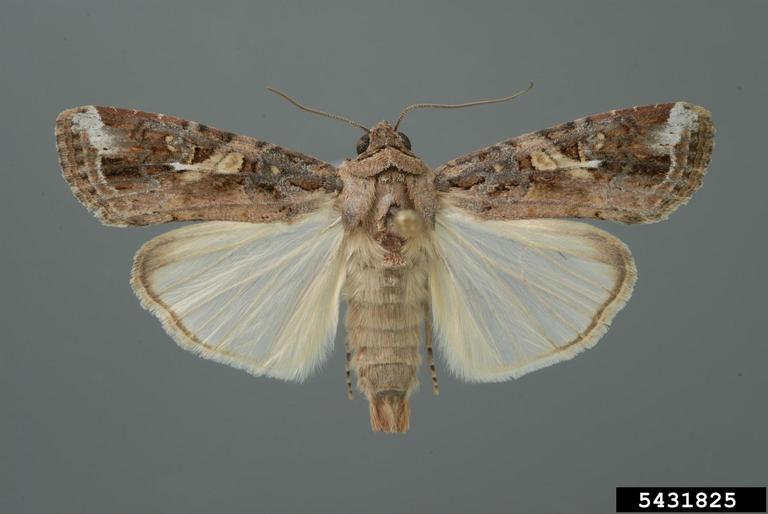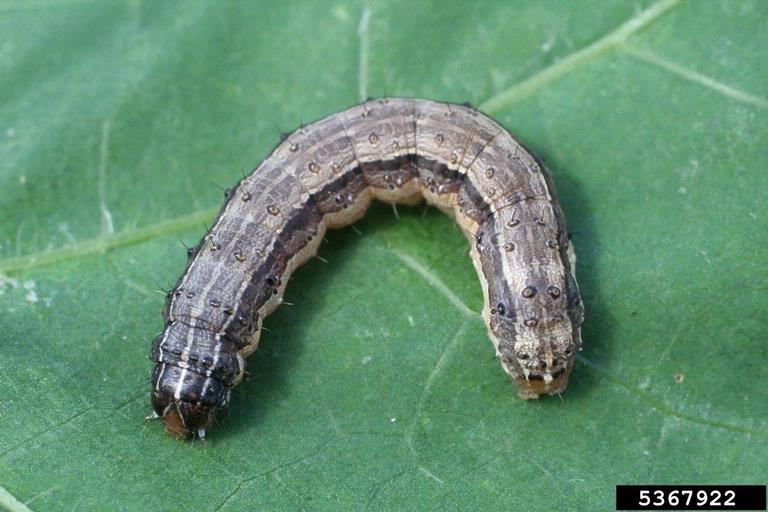Marching In: Fall Armyworm Populations Spike After Summer Weather Swings
go.ncsu.edu/readext?1023096
en Español / em Português
El inglés es el idioma de control de esta página. En la medida en que haya algún conflicto entre la traducción al inglés y la traducción, el inglés prevalece.
Al hacer clic en el enlace de traducción se activa un servicio de traducción gratuito para convertir la página al español. Al igual que con cualquier traducción por Internet, la conversión no es sensible al contexto y puede que no traduzca el texto en su significado original. NC State Extension no garantiza la exactitud del texto traducido. Por favor, tenga en cuenta que algunas aplicaciones y/o servicios pueden no funcionar como se espera cuando se traducen.
Português
Inglês é o idioma de controle desta página. Na medida que haja algum conflito entre o texto original em Inglês e a tradução, o Inglês prevalece.
Ao clicar no link de tradução, um serviço gratuito de tradução será ativado para converter a página para o Português. Como em qualquer tradução pela internet, a conversão não é sensivel ao contexto e pode não ocorrer a tradução para o significado orginal. O serviço de Extensão da Carolina do Norte (NC State Extension) não garante a exatidão do texto traduzido. Por favor, observe que algumas funções ou serviços podem não funcionar como esperado após a tradução.
English
English is the controlling language of this page. To the extent there is any conflict between the English text and the translation, English controls.
Clicking on the translation link activates a free translation service to convert the page to Spanish. As with any Internet translation, the conversion is not context-sensitive and may not translate the text to its original meaning. NC State Extension does not guarantee the accuracy of the translated text. Please note that some applications and/or services may not function as expected when translated.
Collapse ▲‘They come marching two by two, hoorah hoorah’ rings ominously in my mind when I see just a few fall armyworms because I know that is just the beginning. Their population numbers can quickly swell within a day or two, and they can defoliate (eat all the leaves) on your unsuspecting plants. We usually get frantic calls when they decimate folks’ lawns overnight. Don’t pull out the big guns yet; we have some intel and marching orders to help you keep your head in the heat of battle.
What are fall armyworms?
Fall armyworms are caterpillars of the moth species Spodoptera frugiperda. They are fairly nondescript caterpillars and the moth is of the DBM (darn brown moth) variety. They love to feed on members of the grass family, Poaceae, which makes them annoying and sometimes devastating turf and corn pests. The caterpillars can also feed on other types of plants, as well, but prefer grasses.
The moth can lay eggs in large masses, sometimes more than 1,000 eggs in a year.  The eggs hatch and the caterpillars feed, and appear to congregate, or march like an army, as they migrate to new food sources. The caterpillars feed for about two to three weeks and then pupate in the ground for about two weeks. Multiple generations can occur in one year, depending on the weather.
The eggs hatch and the caterpillars feed, and appear to congregate, or march like an army, as they migrate to new food sources. The caterpillars feed for about two to three weeks and then pupate in the ground for about two weeks. Multiple generations can occur in one year, depending on the weather.
Why are they in my yard?
Fall armyworms do not (typically) overwinter in our climate; instead they migrate up from the south (usually Florida) throughout the season. They can arrive as early as late May in the Coastal Plain, but most of their activity starts in July. This is why they usually become a pest in late summer or early fall for us here in North Carolina, depending on the weather and hurricane paths.
late May in the Coastal Plain, but most of their activity starts in July. This is why they usually become a pest in late summer or early fall for us here in North Carolina, depending on the weather and hurricane paths.
You are seeing them in your yard because you have a plant the insects want to feed on: your prized bermudagrass or other luscious turfgrass, most likely. Don’t take it personally!
How do I get rid of them?
The damage the insects can do looks pretty devastating because of the systematic and congregated feeding behavior. Remember, the fall armyworms are usually only around for a couple of weeks. There are many organisms that feed on fall armyworms, like birds and predatory insects when the caterpillars are small. In most cases, the turf can recover with some extra TLC.
If you choose to use chemical insecticides, it is critical to treat early! Chemical insecticide treatments are most effective against smaller, younger caterpillars. Pyrethroids (particularly lambda-cyhalothrin) and carbamates (carbaryl) are what are generally recommended (look on the bottom of the front label for . Read the label BEFORE you buy and spray! Some insecticide will tell you different rates and methods based on the age and size of a target organism (the fall armyworm, in this case). You could end up wasting your time and money, and harming non-target organisms (like bees and butterflies) if you apply the chemical inappropriately. Remember: the label is the law!
If you need help with a fall armyworm infestation, please contact your local N.C. Cooperative Extension office for assistance.
Amanda Bratcher is the Horticulture Agent for North Carolina Cooperative Extension in Lee County.




